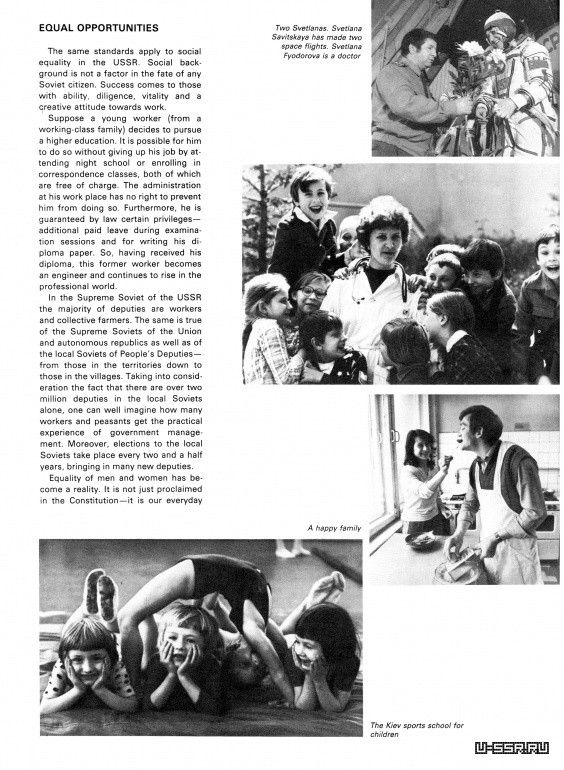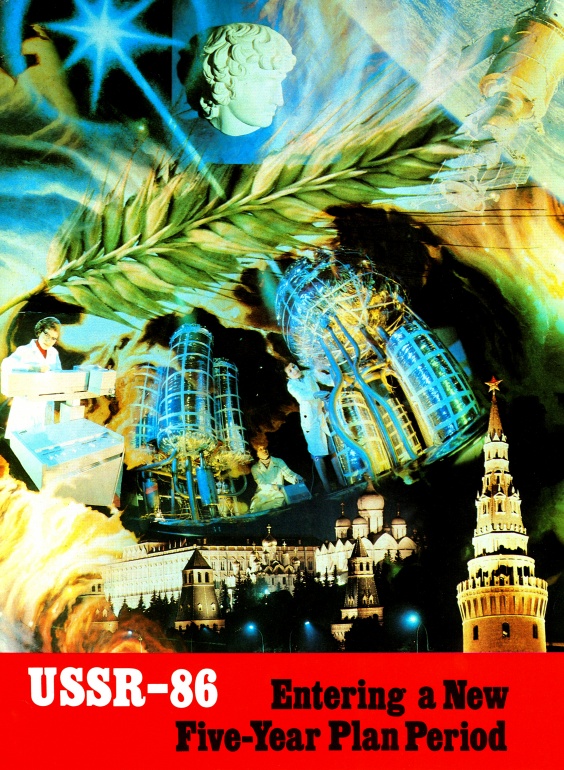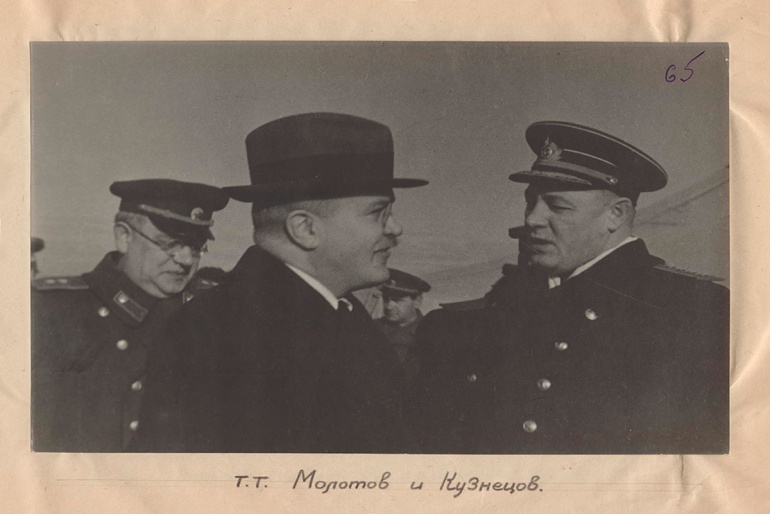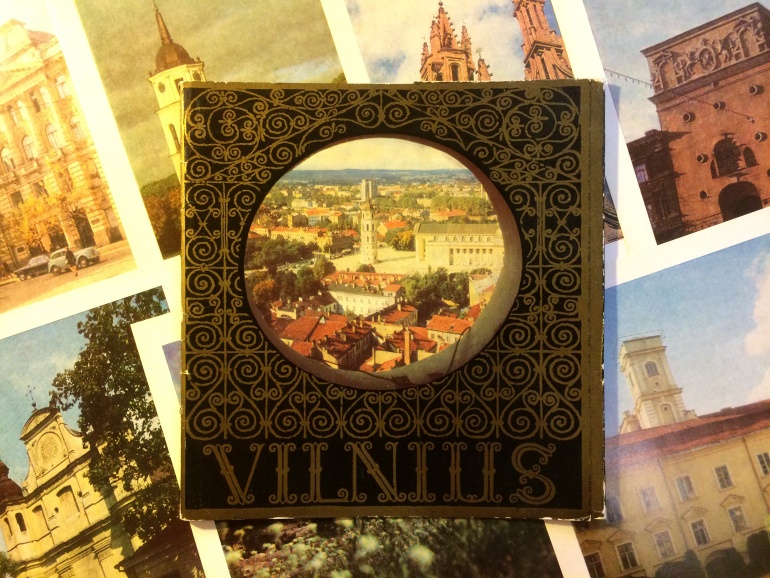На английском языке.
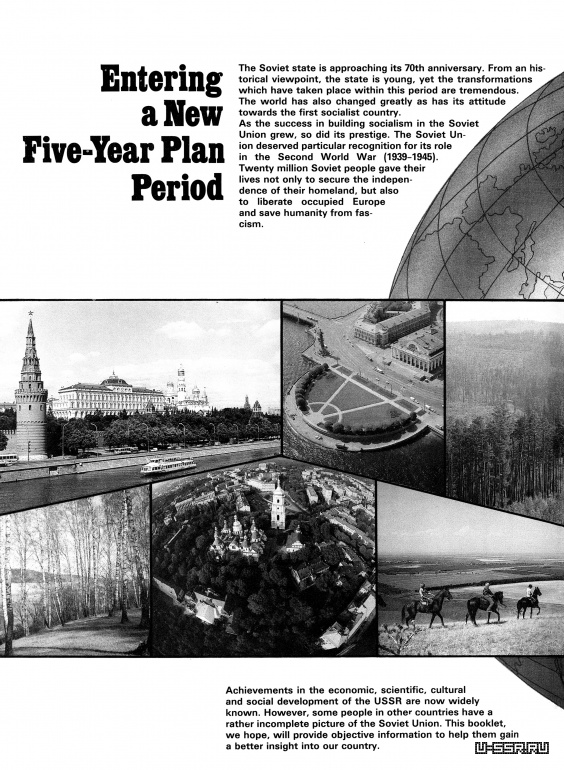
The Soviet state is approaching its 70th anniversary. From an historical viewpoint, the state is young, yet the transformations which have taken place within this period are tremendous.
The world has also changed greatly as has its attitude towards the first socialist country.
As the success in building socialism in the Soviet Union grew, so did its prestige. The Soviet Un ion deserved particular recognition for its role in the Second World War (1939-1945)
Twenty million Soviet people gave their lives not only to secure the independence of their homeland, but also to liberate occupied Europe
Achievements in the economic, scientific, cultural and social development of the USSR are now widely known. However, some people in other countries have a rather incomplete picture of the Soviet Union. This booklet, we hope, will provide objective information to help them gain a better insight into our country.
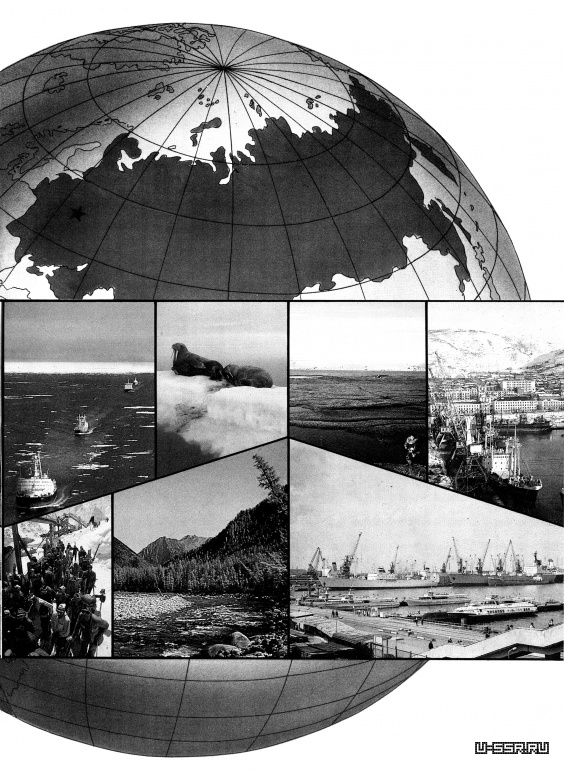
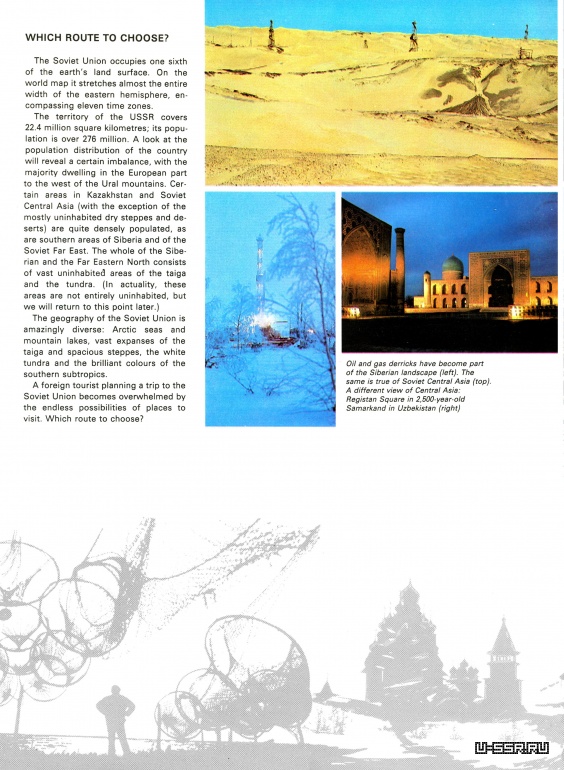
WHICH ROUTE TO CHOOSE?
The Soviet Union occupies one sixth of the earth's land surface. On the world map it stretches almost the entire width of the eastern hemisphere, encompassing eleven time zones.The territory of the USSR covers 22.4 million square kilometres; its population is over 276 million. A look at the population distribution of the country will reveal a certain imbalance, with the majority dwelling in the European part to the west of the Ural mountains. Certain areas in Kazakhstan and Soviet Central Asia (with the exception of the mostly uninhabited dry steppes and deserts) are quite densely populated, as are southern areas of Siberia and of the Soviet Far East. The whole of the Siberian and the Far Eastern North consists of vast uninhabited areas of the taiga and the tundra. (In actuality, these areas are not entirely uninhabited, but we will return to this point later.)
The geography of the Soviet Union is amazingly diverse: Arctic seas and mountain lakes, vast expanses of the taiga and spacious steppes, the white tundra and the brilliant colours of the southern subtropics.
A foreign tourist planning a trip to the Soviet Union becomes overwhelmed by the endless possibilities of places to visit. Which route to choose?
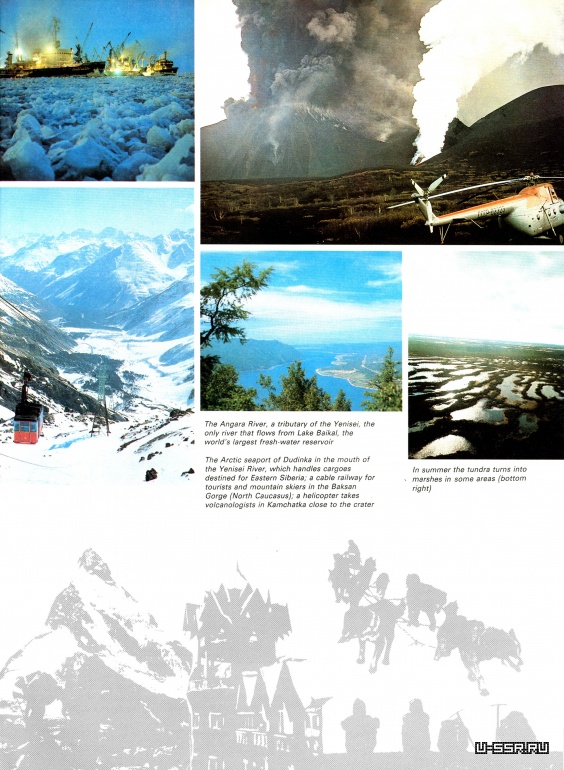
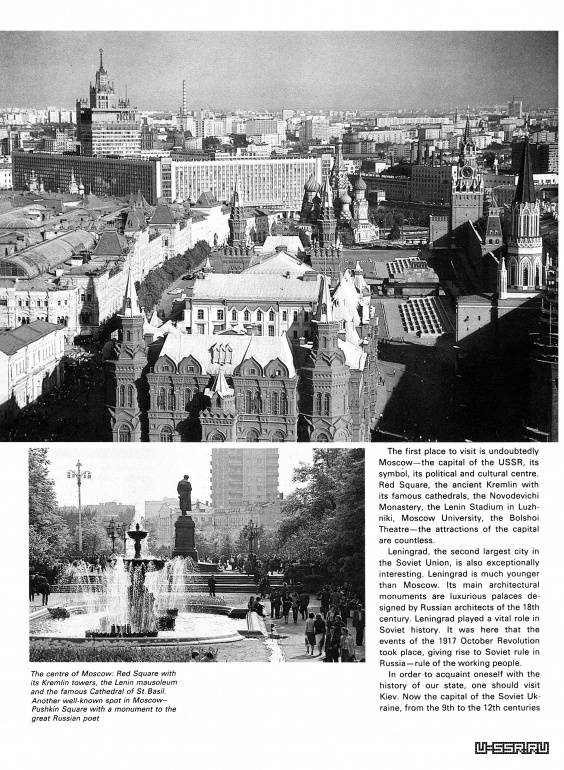
The first place to visit is undoubtedly Moscow—the capital of the USSR, its symbol, its political and cultural centre. Red Square, the ancient Kremlin with its famous cathedrals, the Novodevichi Monastery, the Lenin Stadium in Luzhniki, Moscow University, the Bolshoi Theatre—the attractions of the capital are countless.
Leningrad, the second largest city in the Soviet Union, is also exceptionally interesting. Leningrad is much younger than Moscow. Its main architectural monuments are luxurious palaces designed by Russian architects of the 18th century. Leningrad played a vital role in Soviet history. It was here that the events of the 1917 October Revolution took place, giving rise to Soviet rule in Russia—rule of the working people.
In order to acquaint oneself with the history of our state, one should visit Kiev. Now the capital of the Soviet Ukraine, from the 9th to the 12th centuries.
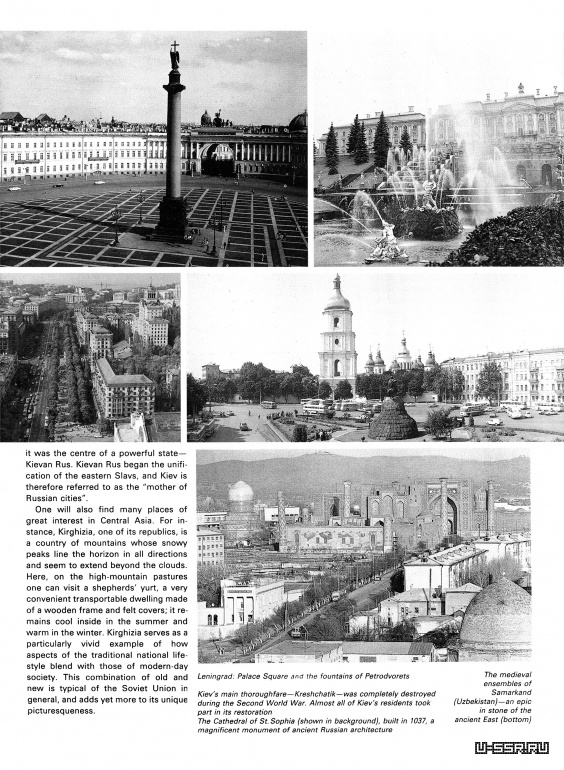
it was the centre of a powerful state— Kievan Rus. Kievan Rus began the unification of the eastern Slavs, and Kiev is therefore referred to as the "mother of Russian cities".
One will also find many places of great interest in Central Asia. For instance, Kirghizia, one of its republics, is a country of mountains whose snowy peaks line the horizon in all directions and seem to extend beyond the clouds. Here, on the high-mountain pastures one can visit a shepherds' yurt, a very convenient transportable dwelling made of a wooden frame and felt covers; it remains cool inside in the summer and warm in the winter. Kirghizia serves as a particularly vivid example of how aspects of the traditional national lifestyle blend with those of modern-day society. This combination of old and new is typical of the Soviet Union in general, and adds yet more to its unique picturesqueness.
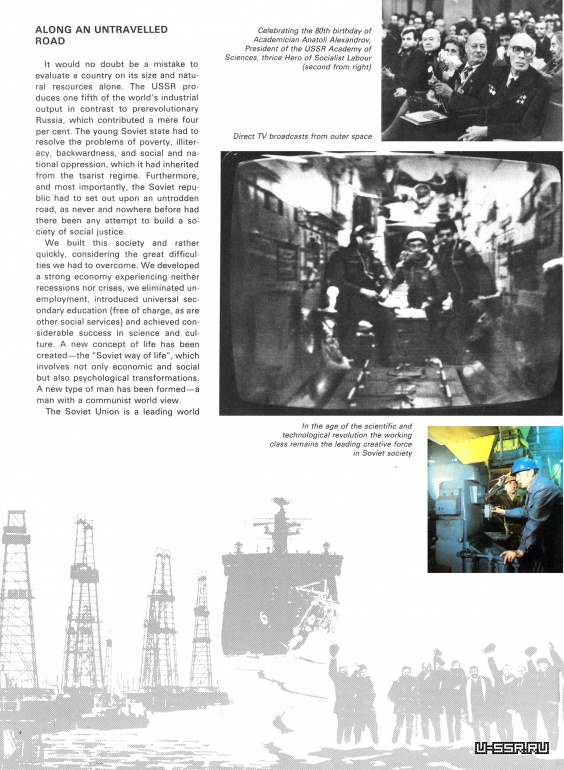
ALONG AN UNTRAVELLED ROAD
It would no doubt be a mistake to evaluate a country on its size and natural resources alone. The USSR produces one fifth of the world's industrial output in contrast to prerevolutionary Russia, which contributed a mere four per cent. The young Soviet state had to resolve the problems of poverty, illiteracy, backwardness, and social and national oppression, which it had inherited from the tsarist regime. Furthermore, and most importantly, the Soviet republic had to set out upon an untrodden road, as never and nowhere before had there been any attempt to build a society of social justice.We built this society and rather quickly, considering the great difficulties we had to overcome. We developed a strong economy experiencing neither recessions nor crises, we eliminated unemployment, introduced universal secondary education (free of charge, as are other social services) and achieved considerable success in science and culture. A new concept of life has been created—the "Soviet way of life", which involves not only economic and social but also psychological transformations. A new type of man has been formed — a man with a communist world view.
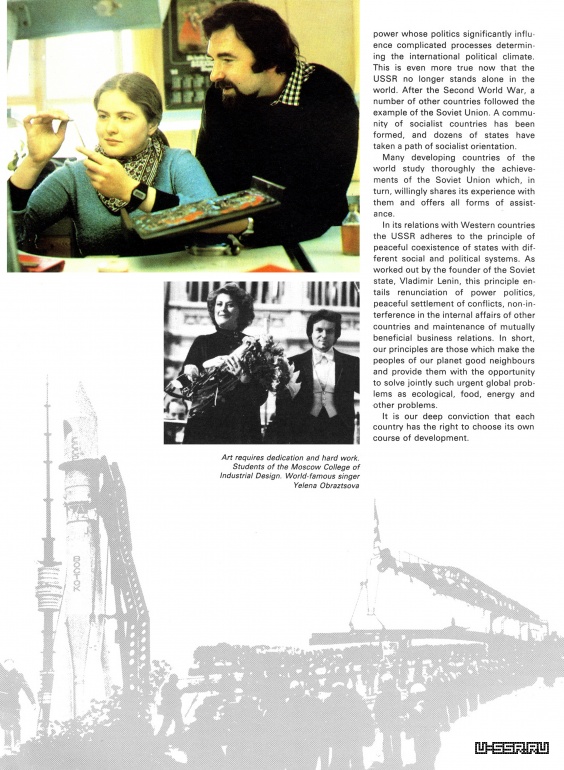
The Soviet Union is a leading world power whose politics significantly influence complicated processes determining the international political climate. This is even more true now that the USSR no longer stands alone in the world. After the Second World War, a number of other countries followed the example of the Soviet Union. A community of socialist countries has been formed, and dozens of states have taken a path of socialist orientation.
Many developing countries of the world study thoroughly the achievements of the Soviet Union which, in turn, willingly shares its experience with them and offers all forms of assistance.
In its relations with Western countries the USSR adheres to the principle of peaceful coexistence of states with different social and political systems. As worked out by the founder of the Soviet state, Vladimir Lenin, this principle entails renunciation of power politics, peaceful settlement of conflicts, non-interference in the internal affairs of other countries and maintenance of mutually beneficial business relations. In short, our principles are those which make the peoples of our planet good neighbours and provide them with the opportunity to solve jointly such urgent global problems as ecological, food, energy and other problems.
It is our deep conviction that each country has the right to choose its own course of development.
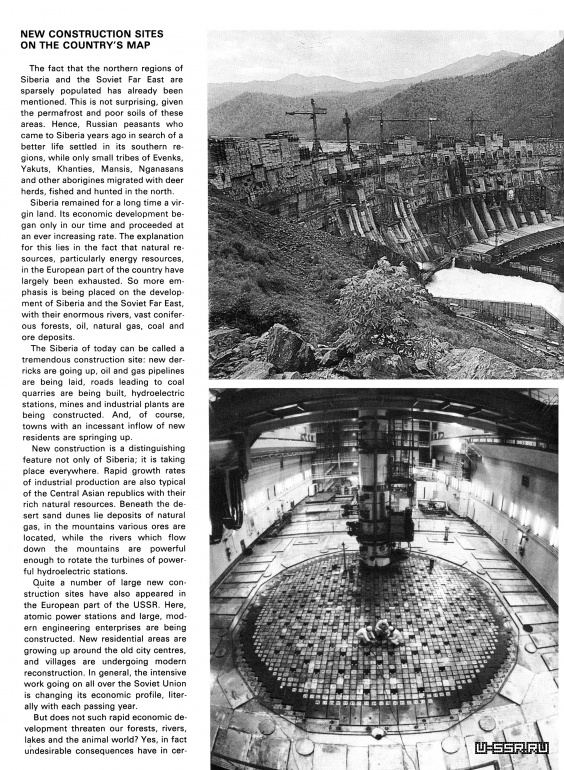
NEW CONSTRUCTION SITES ON THE COUNTRY'S MAP
The fact that the northern regions of Siberia and the Soviet Far East are sparsely populated has already been mentioned. This is not surprising, given the permafrost and poor soils of these areas. Hence, Russian peasants who came to Siberia years ago in search of a better life settled in its southern regions, while only small tribes of Evenks, Yakuts, Khanties, Mansis, Nganasans and other aborigines migrated with deer herds, fished and hunted in the north.Siberia remained for a long time a virgin land. Its economic development began only in our time and proceeded at an ever increasing rate. The explanation for this lies in the fact that natural resources, particularly energy resources, in the European part of the country have largely been exhausted. So more emphasis is being placed on the development of Siberia and the Soviet Far East, with their enormous rivers, vast coniferous forests, oil, natural gas, coal and ore deposits.
The Siberia of today can be called a tremendous construction site: new derricks are going up, oil and gas pipelines are being laid, roads leading to coal quarries are being built, hydroelectric stations, mines and industrial plants are being constructed. And, of course, towns with an incessant inflow of new residents are springing up.
New construction is a distinguishing feature not only of Siberia; it is taking place everywhere. Rapid growth rates of industrial production are also typical of the Central Asian republics with their rich natural resources. Beneath the desert sand dunes lie deposits of natural gas, in the mountains various ores are located, while the rivers which flow down the mountains are powerful enough to rotate the turbines of powerful hydroelectric stations.
Quite a number of large new construction sites have also appeared in the European part of the USSR. Here, atomic power stations and large, modern engineering enterprises are being constructed. New residential areas are growing up around the old city centres, and villages are undergoing modern reconstruction. In general, the intensive work going on all over the Soviet Union is changing its economic profile, literally with each passing year.
But does not such rapid economic development threaten our forests, rivers, lakes and the animal world? Yes, in fact undesirable consequences have in cer-
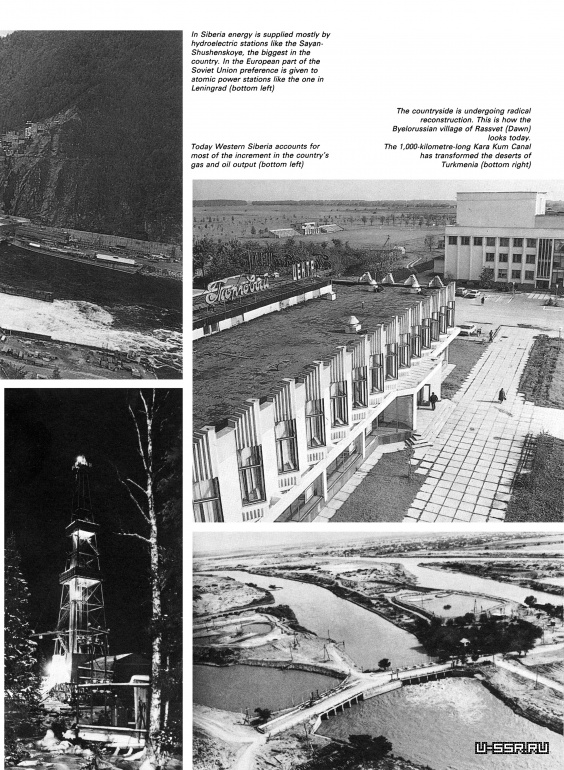
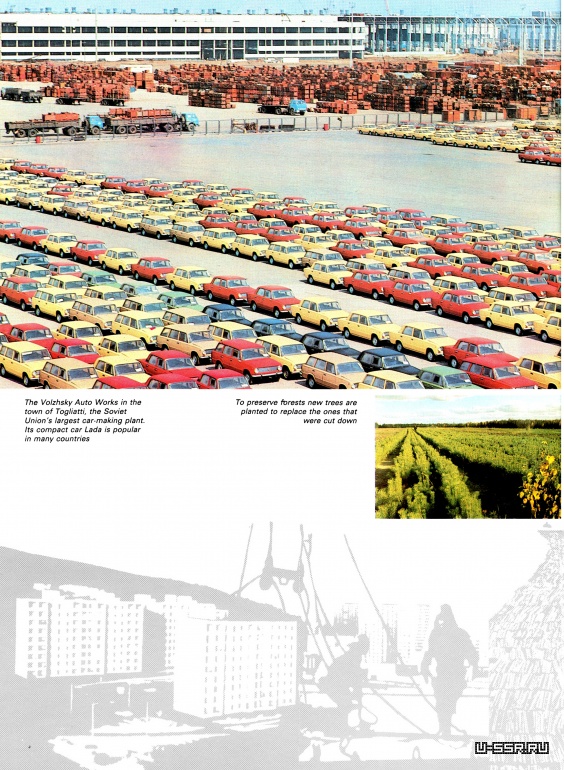
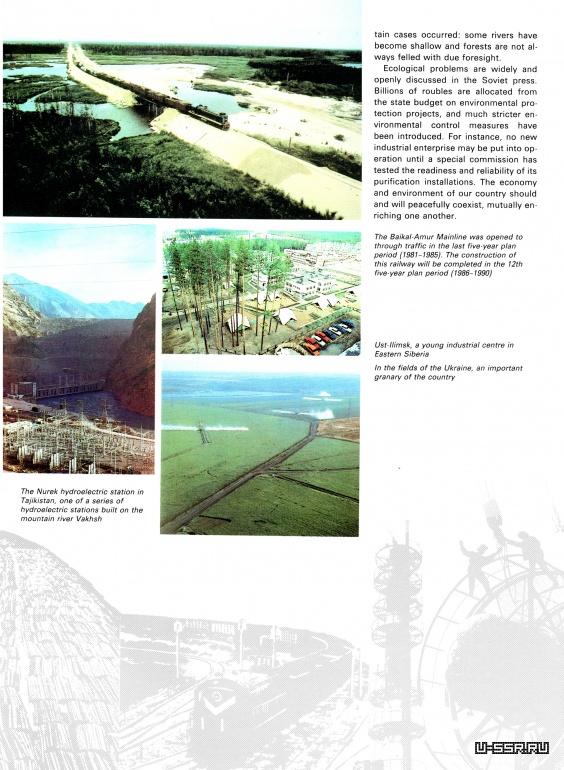
tain cases occurred: some rivers have become shallow and forests are not always felled with due foresight.
Ecological problems are widely and openly discussed in the Soviet press. Billions of roubles are allocated from the state budget on environmental protection projects, and much stricter environmental control measures have been introduced. For instance, no new industrial enterprise may be put into operation until a special commission has tested the readiness and reliability of its purification installations. The economy and environment of our country should and will peacefully coexist, mutually enriching one another.
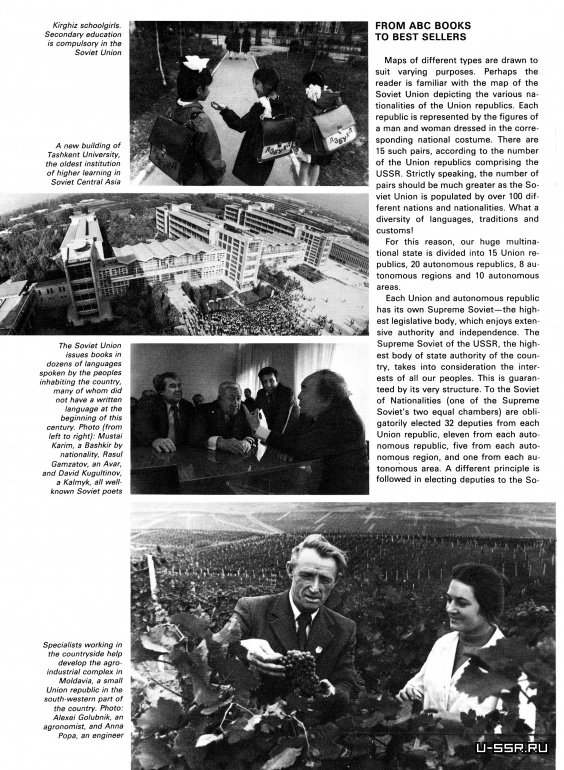
FROM ABC BOOKS TO BEST SELLERS
Maps of different types are drawn to suit varying purposes. Perhaps the reader is familiar with the map of the Soviet Union depicting the various nationalities of the Union republics. Each republic is represented by the figures of a man and woman dressed in the corresponding national costume. There are 15 such pairs, according to the number of the Union republics comprising the USSR. Strictly speaking, the number of pairs should be much greater as the Soviet Union is populated by over 100 different nations and nationalities. What a diversity of languages, traditions and customs!For this reason, our huge multinational state is divided into 15 Union republics, 20 autonomous republics, 8 autonomous regions and 10 autonomous areas.
Each Union and autonomous republic has its own Supreme Soviet—the highest legislative body, which enjoys extensive authority and independence. The Supreme Soviet of the USSR, the highest body of state authority of the country, takes into consideration the interests of all our peoples. This is guaranteed by its very structure. To the Soviet of Nationalities (one of the Supreme Soviet's two equal chambers) are obligatorily elected 32 deputies from each Union republic, eleven from each autonomous republic, five from each autonomous region, and one from each autonomous area. A different principle is followed in electing deputies to the So-
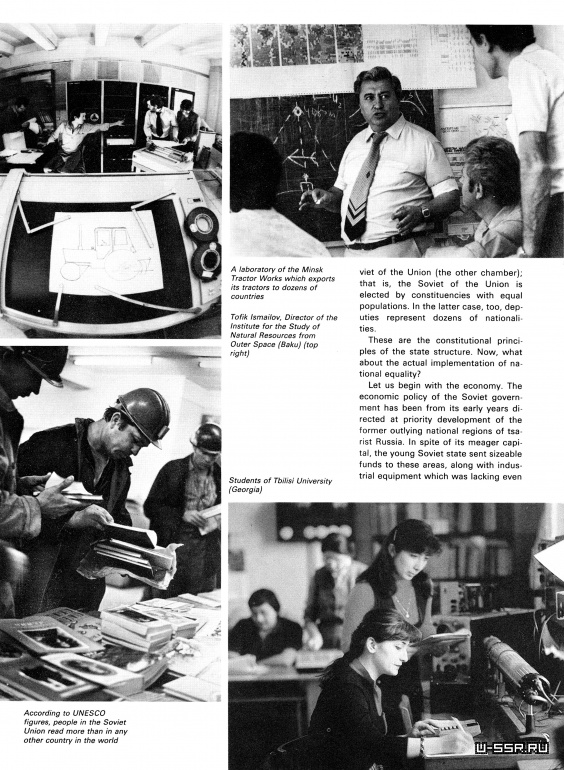
viet of the Union (the other chamber); that is, the Soviet of the Union is elected by constituencies with equal populations. In the latter case, too, deputies represent dozens of nationalities.
These are the constitutional principles of the state structure. Now, what about the actual implementation of national equality?
Let us begin with the economy. The economic policy of the Soviet government has been from its early years directed at priority development of the former outlying national regions of tsarist Russia. In spite of its meager capital, the young Soviet state sent sizeable funds to these areas, along with industrial equipment which was lacking even
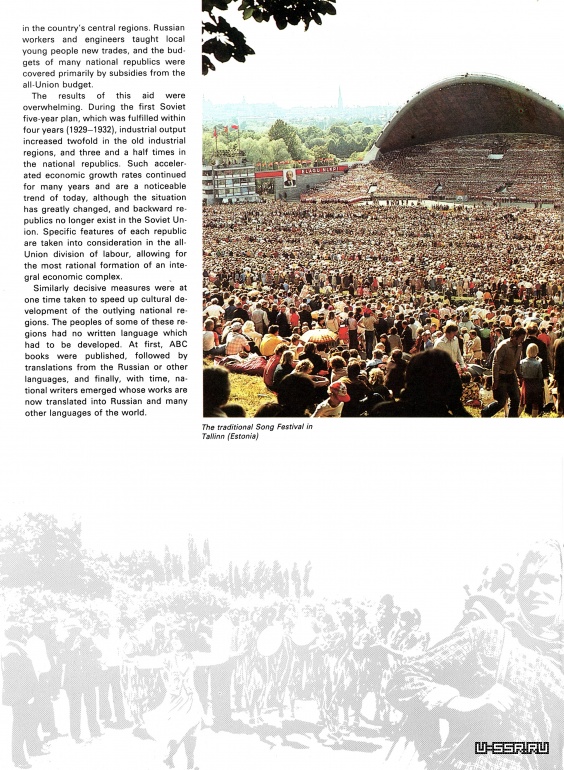
in the country's central regions. Russian workers and engineers taught local young people new trades, and the budgets of many national republics were covered primarily by subsidies from the all-Union budget.
The results of this aid were overwhelming. During the first Soviet five-year plan, which was fulfilled within four years (1929-1932), industrial output increased twofold in the old industrial regions, and three and a half times in the national republics. Such accelerated economic growth rates continued for many years and are a noticeable trend of today, although the situation has greatly changed, and backward republics no longer exist in the Soviet Union. Specific features of each republic are taken into consideration in the all-Union division of labour, allowing for the most rational formation of an integral economic complex.
Similarly decisive measures were at one time taken to speed up cultural development of the outlying national regions. The peoples of some of these regions had no written language which had to be developed. At first, ABC books were published, followed by translations from the Russian or other languages, and finally, with time, national writers emerged whose works are now translated into Russian and many other languages of the world.
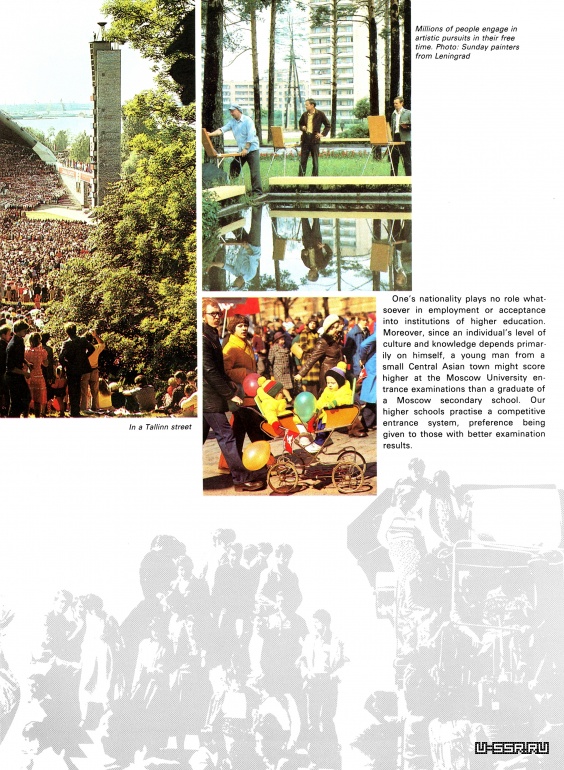
One's nationality plays no role whatsoever in employment or acceptance into institutions of higher education. Moreover, since an individual's level of culture and knowledge depends primarily on himself, a young man from a small Central Asian town might score higher at the Moscow University entrance examinations than a graduate of a Moscow secondary school. Our higher schools practise a competitive entrance system, preference being given to those with better examination results.
